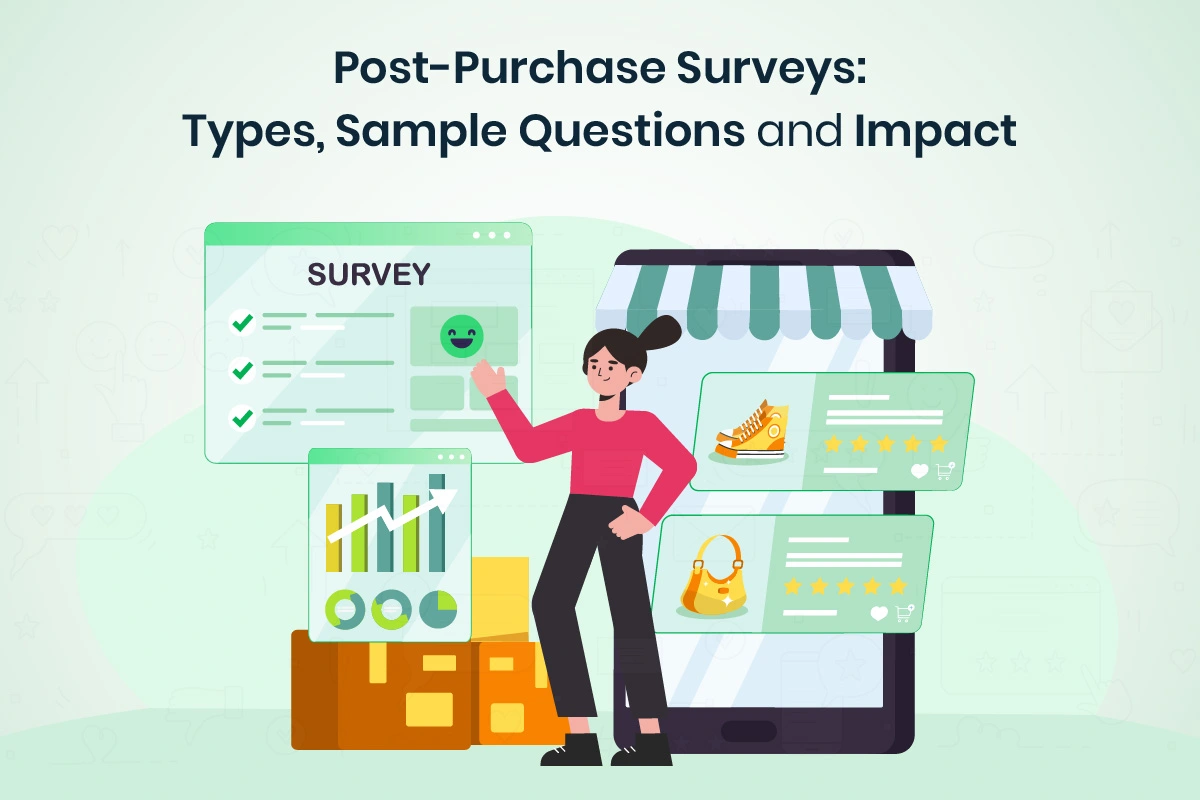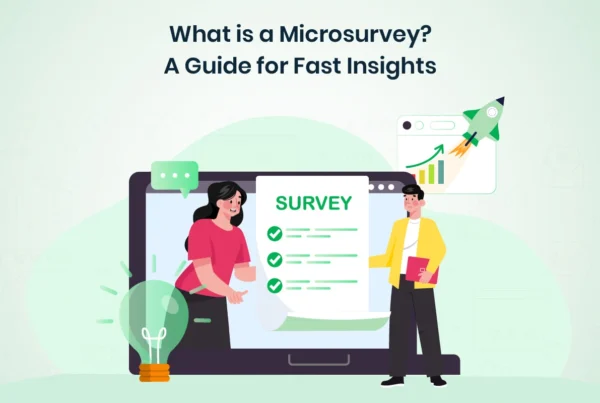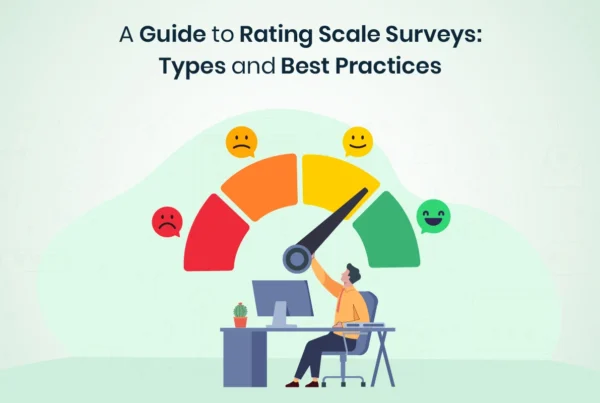In the customer-oriented enterprise, it is crucial to understand what happens after a sale/purchase. Lately many businesses and brands have realized that post-purchase has long term implications with respect to loyalty and advocacy. In this regard, Post-Purchase Surveys have gained traction that provides deep insights into customer and product experience along with service quality.
The aim of the surveys is to collect targeted feedback and analyze and build meaningful relationships with customers. The feedback rectifies shortcomings and niche audiences’ preferences.
Understanding Post-Purchase Surveys
The primary objective of Post-Purchase Surveys is to quantify satisfaction of customers with different journey touchpoints after a purchase. The surveys display an overview of customer experience and highlight the areas that need improvement in product usability, shipment, customer service, and payment methods.
Most importantly, the Post-Purchase Surveys reveal what customers really think instead of what businesses assume. By asking relevant questions, firms will be able to determine the level of satisfaction, keep track of NPS scores, and make improvements in customer experience based on the data collected.
Types of Surveys
Surveys need to be short and simple with targeted questions which can increase the completion rates. Lengthy surveys can overwhelm customers, which might push them to quit midway. Here are a few survey types:
1. Email Survey:
It is the most typical and flexible type of survey. It supports long and thorough surveys and can also be reported easily. The practice suggested involves delivering it after the customer has received and used the product for an adequate amount of time, which is usually a few days to a week after purchase.
2. Point-of-Interaction Embed:
For a quick response, insert a one-question survey right on the order confirmation or “Thank You” page. This is perfect for gaining input on the whole buying process, as the experience will still be fresh in the customer’s mind.
3. Net Promoter Score (NPS):
The NPS system formats the customer feedback in one succinctly powerful question: “On a scale of 0-10, how likely are you to recommend our company/product to a friend or colleague?” In this way, it measures buyer loyalty and groups the customers into three categories: Promoters, Passives, and Detractors. Thus, giving one a clear business growth indicator.
4. Customer Satisfaction (CSAT):
The CSAT is frequently applied with single interactions, thus asking, “How satisfied were you with your experience?” generally on a 1-5 scale. It is a very supportive tool for detecting customer satisfaction in the purchase or delivery process.
5. Customer Effort Score (CES):
The CES places the focus on the customer, asking, “Was it easy to do business with us?”. An experience categorized as low effort is very likely to result in a loyal customer.
When to Dispatch Post-Purchase Surveys?
Timing plays a critical role in determining the response rates of Post-Purchase Surveys. If they are sent out too early, customers may not have had adequate time to utilize the product. If sent out too late, the experience may no longer be vivid in their minds.
The ideal time to send the survey is between 24 and 72 hours after delivery or completion of service. For products that need more extended evaluation periods (such as appliances or software), waiting for a one-week post-purchase could result in more accurate feedback results.
Crafting Questions for Post-Purchase Feedback
When drafting questions for Post-Purchase feedback, it is important that they need to be easy to understand. Each question should be asked about one specific part of the experience. Some common types of questions are:
- How satisfied are you with your recent purchase?
- Was the product delivered on time?
- Did the product meet your expectations?
- How likely are you to recommend our brand to others?
- Was the checkout process smooth and hassle-free?
A balance of quantitative scales (like rating from 1–5) with open-ended questions is the best practice. This will enable customers to give detailed responses.
Benefits of Post-Purchase Surveys
Post-Purchase Surveys do more than just gather feedback. They also assist in minimizing product returns, enhancing reputation, and stimulating repurchases. Customers who feel their feedback is valued are more likely to stay loyal. Besides, the results from these surveys empower brands to find process inefficiencies, enhance customer service, and tailor marketing strategies accordingly.
From a marketing perspective, Post-Purchase feedback is best used in attribution analysis to see which channels are working, such as social media referrals or paid search. With this kind of information, it’s possible to reallocate budgets to where they are really working and possibly get a better ROI.
With respect to loyalty, NPS metrics help locate promoters who are engaged positively may be requested to provide reviews that can be used as social proof to increase visibility on reputation platforms. These are all the benefits that are interconnected to create a feedback loop that primarily reduces churn as well as increases the lifetime value of the customer.
1. Integrating Surveys with CX Platforms
Modern surveys can be integrated with Customer Experience (CX) platforms for real-time analysis. Integration allows businesses to track satisfaction metrics next to customer history, purchase frequency, and interaction data. Platforms such as piHappiness make it possible to automate workflows, track sentiments, and identify trends. This integration transforms customer feedback into strategic intelligence that drives business growth.
2. Common Mistakes to Avoid
If surveys are poorly designed, the chances of Post-Purchase feedback initiatives will go in vain. Some of the common mistakes include sending lengthy surveys and not acting on the responses received. Another mistake is overlooking negative comments or feedback. This often provides the most valuable insights.
To avoid these common errors that are typical of most surveys, it is advisable to perform an internal test for the survey before actually sending them out and be certain that each question is in line with a business objective that can be measured. Besides, inform customers what you intend to do with their feedback.
3. Impact of Surveys
The impact of Post-Purchase Surveys can be seen by tracking ͏response rates, satisfaction scores, and the frequency of repeat purchases. If͏ there is an increase in the NPS or CSAT scores, it means that satisfaction has improved. But if complaint rates are falling, this indicates better service quality. To measure progress, you should compare these metrics over time.
Take note of any recurring feedback trends found in qualitative insights. Successful programs do more than just gather data. They continuously evolve͏ and adapt to customer expectations as well as market conditions.
Conclusion
Post-Purchase Surveys represent a low-cost and high-yield way of collecting customer insights, which allows companies to move from the position of being merely service providers to becoming active experience designers. Through the implementation of such measures, companies become capable of creating strong relationships with their customers, outperforming their competitors, and succeeding in a consumer-savvy era. Businesses will treat each survey not only as a conclusion but also as a commencement of continuous development.








